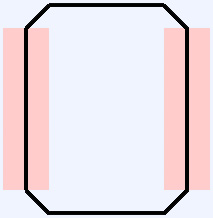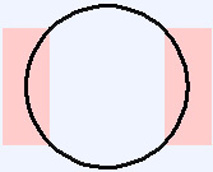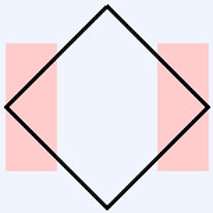Traffic sensors
Traffic lights in gridded center cities are usually on timed cycles, synchronized to expedite traffic flow. But outside the center city, most traffic lights are controlled by the vehicles themselves. As drivers, we take it for granted that the light will turn green for us, within some reasonable time depending on contending traffic. Furthermore, we expect the lights not to waste our time, for example, by giving a left turn signal to a lane where no one is waiting to turn left. To perform these miracles that we take for granted, traffic light controllers need vehicle sensors in all lanes.
We cyclists need to take advantage of these sensors, too. You can sit there forever at a cross street with no traffic, waiting vainly for a light. As well as a safety hazard, when cyclists run red lights, it creates hatred and contempt in motorists who have never been on the windy side of the windshield. This can lead to harrassment on the road, and calls for legislation to keep us off some roads. We don’t need that.
Cyclists often don’t exploit traffic sensors because they don’t understand them – something I’d like to explain here. There are several kinds of sensor, usually visible from the saw cuts on the pavement. All of these sensors are magnetic: electrical current flows through a coil of wire buried in the pavement, and the metal in a car – or a bicycle – disturbs the magnetic field, which the sensor then detects.
The magnetic field is not equally strong everywhere; it has what we might call a sweet spot, sometimes more than one. Not only is a car big, it also contains lots of metal, so it hardly matters where it stops – one of the reasons we don’t learn about traffic sensors as drivers. But a bicycle is small enough that it needs to stop on the sweet spot. Fair enough; where’s the sweet spot?
Here are the most common forms of traffic sensors. The hot pink area shows the sensitive sweet spot. This is where you want to stop.
|
The simplest traffic sensor is a loop; it can be – |
|
|
|
– a square with broken corners, |
|
|
– a circle, |
|
|
– a diamond. |
In all cases, the magnetic field is strongest directly over the wires of the loop itself. Since most of the effect on the sensor actually originates from the wheel rim (because it’s so close), get the wheel into the sweet spot!
Many cities paint a bicycle stencil at the sweet spots of the traffic sensors. If you use the stencil, stop directly on top of it; as we’ve seen, the sweet spot is a matter of a few inches. It’s also a good idea to examine the saw cuts to make sure the stencil is actually in the right place! In the course of street repairs, the sensor can be modified and the stencil can become obsolete.
There are other kinds of sensors, more sensitive than simple loops. By the way, if you encounter a traffic sensor that won’t detect your bike – and it ought to detect an aluminum bike as well as a steel one – call the city traffic department and ask them to adjust it.
|
A more sensitive sensor design is the one shown in figure 8. Think of this as two loops side by side. The sweet spot is in the very center, where the two loops overlap, and it’s a lot better than a simple loop. Sometimes this form of sensor is elongated for thirty feet or more behind an intersection. Long or short, it’s all the same. |
|
|
You have to use a certain amount of imagination to see a figure 8 in a circle with a diagonal line, but that’s what it is. Theoretically you can stop anywhere on this sensor, as long as you straddle the diagonal, but I always like to skew the bike just a little to align it with the diagonal. |
|
|
Finally, the sensor style I call complex, for lack of a better term, is a scramble of loops, a bit like the picture. You'll recognize it when you see it. Topologically, it’s actually a figure 8 with the two loops separated. It’s even more sensitive than the standard figure-8 sensor. You should be able to trigger it from anywhere within it. |
|
I said you had to stop on the sweet spot, and that’s true. Traffic sensors are designed to ignore noise, and a bicycle rolling across the sweet spot just produces a blip that the sensor throws away. Stop and let it soak in.
There is one exception, and that is when the light is already green in your direction. While you sprint, you can sometimes hold the light a few additional seconds by riding through the sweet spot of the sensors. Just be ready to stop in case it doesn’t work out!
This is fine, but traffic sensors are out there in the traffic lanes, not over there near the right shoulder. What’s a cyclist to do? Well, if there is motor traffic, of course, it isn’t necessary to trip the sensor – let the big guys do it! If there’s no traffic, you have to do it yourself. I recommend a helmet-mounted rear-view mirror, so you can easily determine whether it’s necessary – and safe! – to get out there and trip the sensor.





